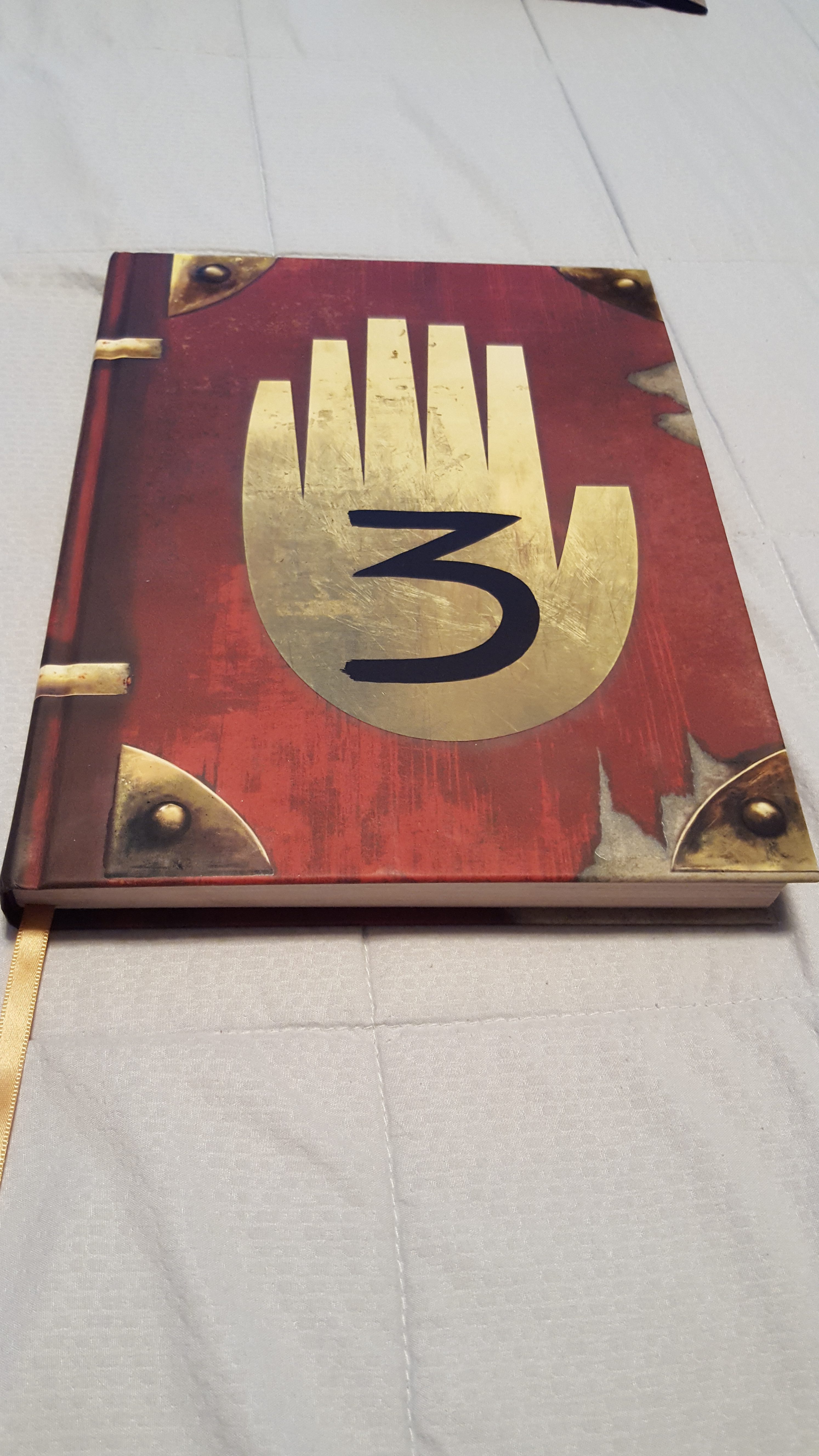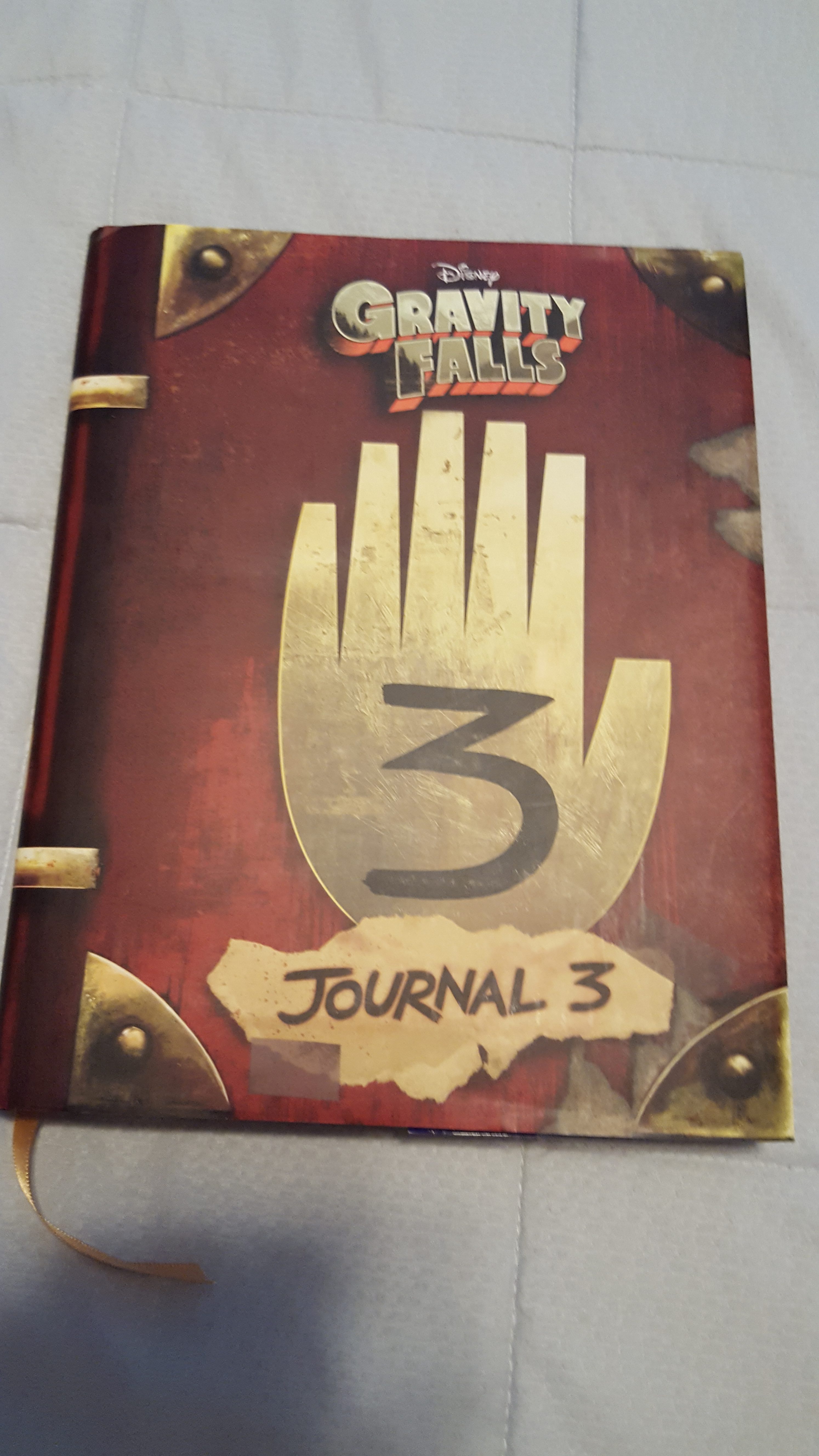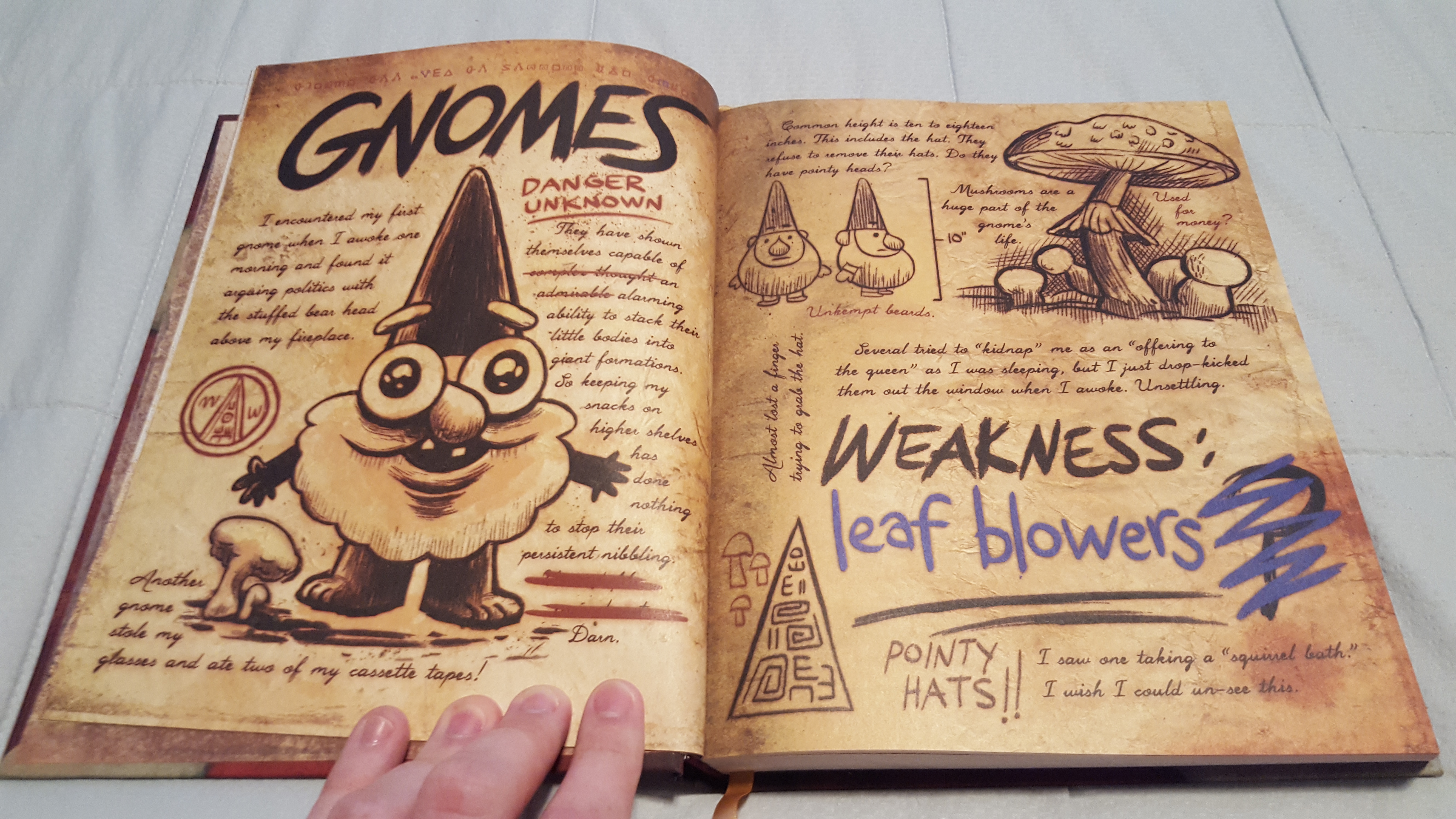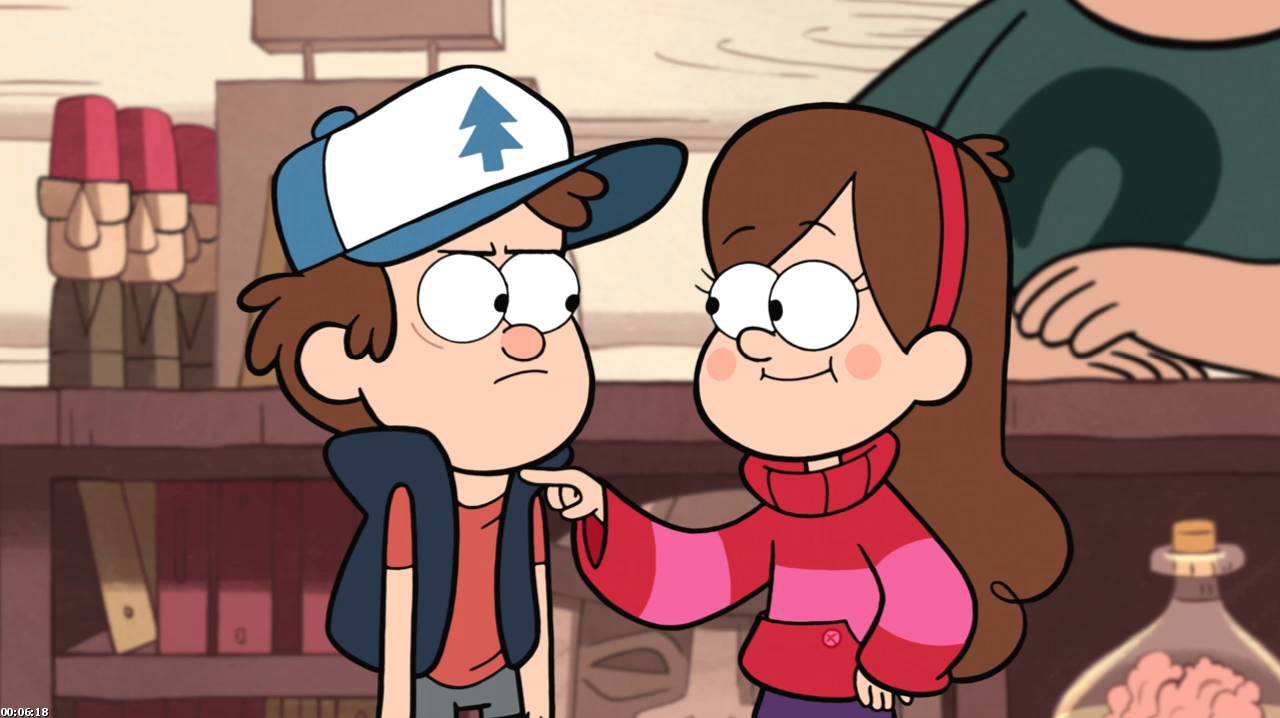written by David Steffen
 Have you seen the Disney XD show Gravity Falls, created by Alex Hirsch? If you haven’t, you should! And you should probably do it before you read this book, because it’s a tie-in that will have major spoilers for the show–I think it will generally work better watching the show first, and then reading the book. Here’s a review of the show.
Have you seen the Disney XD show Gravity Falls, created by Alex Hirsch? If you haven’t, you should! And you should probably do it before you read this book, because it’s a tie-in that will have major spoilers for the show–I think it will generally work better watching the show first, and then reading the book. Here’s a review of the show.
OK, so now you’ve caught up on the show, right? So this is that journal, the one that Dipper discovers and uses a guide to the town of Gravity Falls through the duration of the series, and the author of which is a major mystery of the show.
 I don’t usually talk much about book design in the reviews, but this book is really really nice. Usually I’m kindof ambivalent about book jackets, because I’m honestly not sure what purpose they serve. But in this case, the book jacket includes all the stuff that you would expect to see on a book cover–the title on the cover, the title on the spine, the blurbs on the backet, the bar code. But if you remove the book jacket, the book cover matches quite closely to the appearance of the journal on the show–no title on the spine, no blurbs or barcode, and the cover is just a six-fingered golden hand with a number “3” drawn on it. It’s very eye-catching and consistent with the show which is cool. AND, the inside of the book jacket has extra illustrations–blueprints of science fictional contraptions from the series, images which don’t appear anywhere else. The book also comes with one of those nice attached-to-the-binding silky bookmarks that I’m used to only seeing in hymnals at church–very nice touch.
I don’t usually talk much about book design in the reviews, but this book is really really nice. Usually I’m kindof ambivalent about book jackets, because I’m honestly not sure what purpose they serve. But in this case, the book jacket includes all the stuff that you would expect to see on a book cover–the title on the cover, the title on the spine, the blurbs on the backet, the bar code. But if you remove the book jacket, the book cover matches quite closely to the appearance of the journal on the show–no title on the spine, no blurbs or barcode, and the cover is just a six-fingered golden hand with a number “3” drawn on it. It’s very eye-catching and consistent with the show which is cool. AND, the inside of the book jacket has extra illustrations–blueprints of science fictional contraptions from the series, images which don’t appear anywhere else. The book also comes with one of those nice attached-to-the-binding silky bookmarks that I’m used to only seeing in hymnals at church–very nice touch.
 Inside the book there are three distinct sections. The first is the contents of the journal before Dipper finds it in episode 1 of the series. You see these pages in the show, but usually only briefly and you can only make out the titles and major illustrations. The book contains all of those, as well as some that I don’t think ever appear in the show, so this part is my favorite part of the journal, because you are reading what Dipper read on his own. The second part happens DURING the show, and is Dipper writing new pages into the journal. I love the show, but I found this the weakest section because I had already seen the episodes, so it felt redundant, and each episode covered in the book only covered a couple pages, so it also felt rushed and without the characteristic humor of the show. The third section happens near the end of the series, after a major event that I won’t spoil for you, but which changes the nature of the content of the journal again. The design all makes sense, but I found that middle section pretty weak.
Inside the book there are three distinct sections. The first is the contents of the journal before Dipper finds it in episode 1 of the series. You see these pages in the show, but usually only briefly and you can only make out the titles and major illustrations. The book contains all of those, as well as some that I don’t think ever appear in the show, so this part is my favorite part of the journal, because you are reading what Dipper read on his own. The second part happens DURING the show, and is Dipper writing new pages into the journal. I love the show, but I found this the weakest section because I had already seen the episodes, so it felt redundant, and each episode covered in the book only covered a couple pages, so it also felt rushed and without the characteristic humor of the show. The third section happens near the end of the series, after a major event that I won’t spoil for you, but which changes the nature of the content of the journal again. The design all makes sense, but I found that middle section pretty weak.
The author of the book is often secretive, and so has chosen to write some notes in code. Not enough that you’ll be missing major portions of the book, but small bits here and there. If you feel like trying out your hand at cracking codes, this is a little added feature. And if you don’t, you can easily find the solutions with a little Googling if you want to read that extra content.
I was very happy to get my hands on the book, both for the look, to find out some backstories that aren’t in the show, and read some more of the original journal entries. If you love Gravity Falls, odds are that you’ll love this book. (And if you haven’t seen Gravity Falls, you should!


 I was surprised when I heard that the show was concluding, because I enjoyed it so much that I hoped it would keep going. But it sounds like that had been what Alex Hirsch had intended from the beginning. He had an overall arc in mind and the show was done when the arc was finished. Which is cool in its own way, most episodes advance the main story in at least a small fashion, and it doesn’t shy from big revelations.
I was surprised when I heard that the show was concluding, because I enjoyed it so much that I hoped it would keep going. But it sounds like that had been what Alex Hirsch had intended from the beginning. He had an overall arc in mind and the show was done when the arc was finished. Which is cool in its own way, most episodes advance the main story in at least a small fashion, and it doesn’t shy from big revelations.